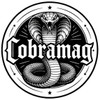1982 - Virgil Tripp started building custom 1911 pistols. Skillful shooters used these pistols to win and place highly in local, national and world competitions.
1987 - Virgil designed and manufactured the industry’s first 1911 EDM hammers and sears. Now, gunsmiths could build great predictable trigger jobs without the grief of starting with substandard parts. The polymer titanium trigger that is still sold today was Virgil’s next design. More parts were considered and things began to escalate. A company was born, Tripp Research, Inc.
1991 - Shooters demands for competition pistols began to evolve. Red dot optics, higher round capacity, and lighter weight pistols were in demand. Tripp Research began work on what is now the STI 2011 modular frame. Virgil was already known for his exceptional part designs, and went to work on a pistol, but wanted the design as backward compatible with the 1911 as possible. Realizing he needed someone with more complex computer skills to do the more complex design work, Virgil began looking for the help he needed to get the new project off the ground.
1993 - An engineer named Sandy Strayer joined Tripp Research. With Virgil’s pistol knowledge and design expertise combined with Sandy’s exceptional computer skills, Tripp and Strayer revolutionized the 1911 market by designing a modular hi-capacity 1911 frame for IPSC shooters. Virgil gives Sandy Strayer equal stake in the Company, Co-Patent rights, and the company's name changed to Strayer-Tripp International (STI).
May 1994 – Final Patent for the 2011 modular grip was published.
June 1994 - Sandy Strayer left STI and joined forces with Michael Voigt, and created SVI. STI changed the 'STI' acronym From 'Strayer Tripp International' to mean 'Science, Technology, Ingenuity.'
1997 – Dave Skinner purchases STI from Virgil. Virgil moves out to West Texas and starts up Tripp Research again, this time mastering Hard Chrome pistol re-finishing since finding a good finish was always a challenge during his pistol smithing days.
1998 – Virgil begins work on a 1911 style magazine, recognizing that as a weak point of design and function of the 1911. Soon after, Tripp Research 'Gen I' CobraMags are released. Our follower, basepad, and tube design addressed a lot of problems shooters had with 8 round magazines previously. Our Magazine increased the reliability of all 1911’s and raised the bar on magazine companies.
2008 – Virgil Tripp releases the 'Gen II' Cobra Mags, perfecting the design and improving overall product quality and function. Other products came and went over the years for various reasons, Virgil loves to design new products and push the boundaries of what can be done.
2016 – Shooters demands for a competition platform continue to grow and evolve. STI patent on the modular grip has expired, other companies rush to copy the still popular competition platform. Virgil takes a fresh look at his original design created decades ago, realizes that the shooters demands have changed since the creation of the Gen I modular grip, and decides it’s time to make it better. Using the new and current demands of shooters for improved grip, raised grip height, increased round count, current popular calibers, and increasingly sophisticated aftermarket parts being installed on competition 1911’s, Virgil gets to work on the new updated Gen II Modular pistol.

